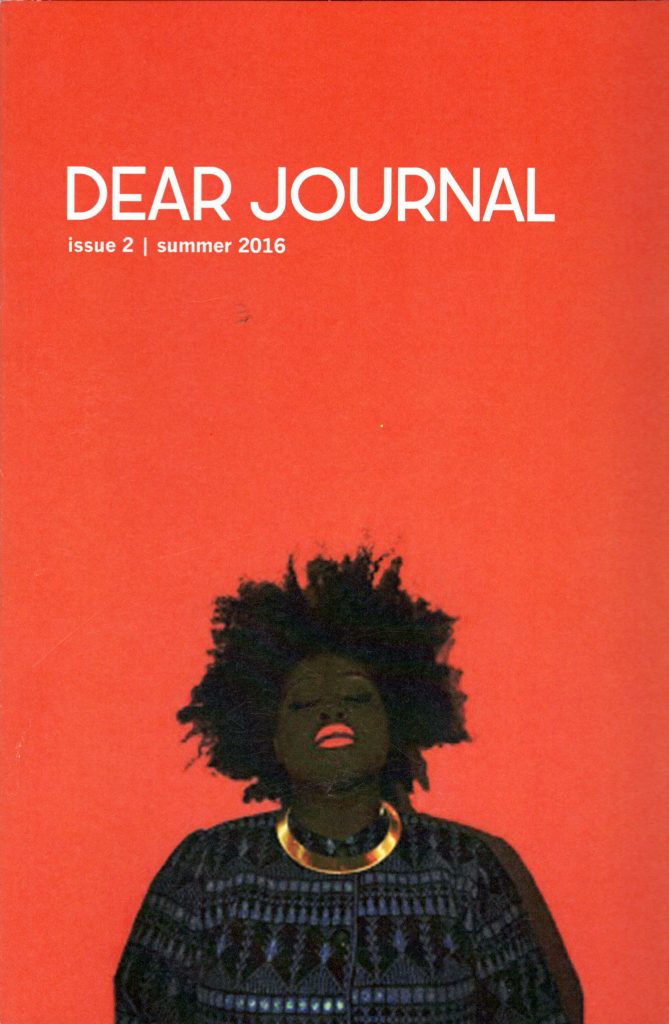
Dear Journal #2
Compilation zine, Laina Hughes & Dunja Kovacevic (ed.), [email protected]
Flipping open the pages of this anthology of intersectional feminism just after it arrived at my front door, I was pleasantly surprised to stumble across the work of Rochelle Brockington, a Brooklyn-based body-positive photographer. I’m a keen follower of their Instagram (@fatleopard.jpg) and the presence of their work in Dear Journal’s Summer 2016 issue read like a call to arms — and as a fat, black, femme reader, it immediately piqued my interest.
Published bi-annually, this sleekly-bound second issue of Dear Journal puts each of its 92 pages to work. The work of its 39 contributors spans a variety of formats – stories, poetry, artwork, and thoughts — and it swells with content reflecting on the experiences of women, non-binary, and two-spirit folx. Melissa Martin’s “staggering forward” hits hard and with feeling. Statements like, “hierarchical masculinity swallowed up our stories” command a focused space of reclamation for the journal’s contributors. In keeping with the anthology’s aims, the writers, poets, and artists featured here span across the lines and limits of gender, sexuality, ability, race, and geography.
In light of this, the tendency of the journal’s white contributors to avoid any acknowledgment of their whiteness and its role in an intersectional feminist practice is glaring. At times the historical and social positioning of white femininity and femininity (more broadly speaking) become conflated as one, as in Cathleen Evans’ piece, leaving me to wonder, a la Sojourner Truth:“Ain’t I A Woman?” Other pieces, such as Jen Zoratti’s essay, “This is 30,’” wherein she looks back on her time spent as a music critic and fan in relation to feminist politics, are deeply engaging and refreshingly accessible. Similarly, Vartika Sharma’s vibrant collage work looks at the relations between feminism and cult, camp, and kitsch aesthetics. I highly recommend squirreling away for a lengthy moment (or two) to pour over the range of narratives in the space carved out by this issue of Dear Journal. (Sarah-Tai Black)
